Este post também está disponível em:
Português
English
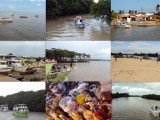
The Parnaíba Delta is in a nook between the coast of Piauí and the Maranhão, the Parnaíba River meets the ocean and forms the only open sea delta in all of America.
As it approaches the Atlantic, the Parnaíba opens into five arms and gives rise to a set of ecosystems totaling about 2700 square kilometers, comprising beaches, dunes, igarapés and mangroves that surround more than eighty islands.
Although 65% of the Parnaíba delta region belongs to the state of Maranhão, the city of Parnaíba, 354 kilometers from Teresina and 19 km from Luís Correia, is the main gateway for those wishing to visit it.
The Parnaíba River rises in the Chapada das Mangabeiras, on the border of the states of Piauí, Bahia and Tocantins, and has a length of 1,344 km and configures in all its extension the division of Piauí with Maranhão. Its main tributaries on the right bank are the rivers of Longá, Poti, Canindé and Gurguéia, and on the left bank, with expressive water contribution, the river of Balsas.
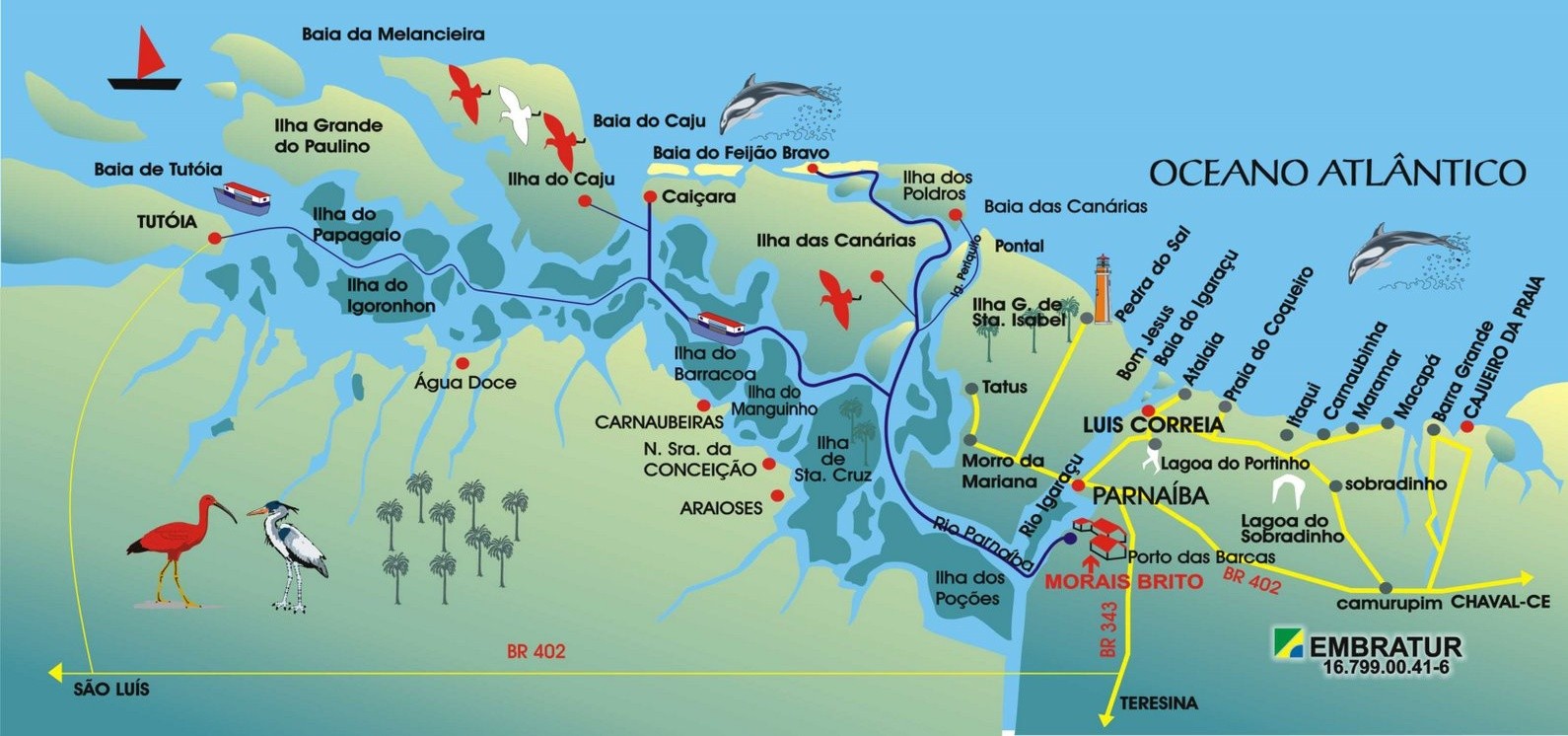
A city of wide, tree-lined streets, Parnaíba was a prosperous trading post in the 18th and 19th centuries thanks to the export of jerky, and then, at the beginning of the 20th century, carnauba wax.
From the times of prosperity, a beautiful house and the nostalgic port of Barcas remain, where old buildings now house a shop, restaurant and pizzeria with tables on the sidewalk lit by lamps on the bank of the Igaraçu River, an arm of the Parnaíba.
Most of the boats heading to the attractions and cities bathed by the delta leave from the port of Tatu, on the island Grande de Santa Isabel, 6 kilometers from Parnaíba and the largest in the delta.
There, it is possible to embark on organized tours for groups of 40 to 250 people, or even rent a speedboat. Some routes can even be integrated with the tours in Lençóis Maranhenses.
Parnaíba Delta Tourist Spots Videos
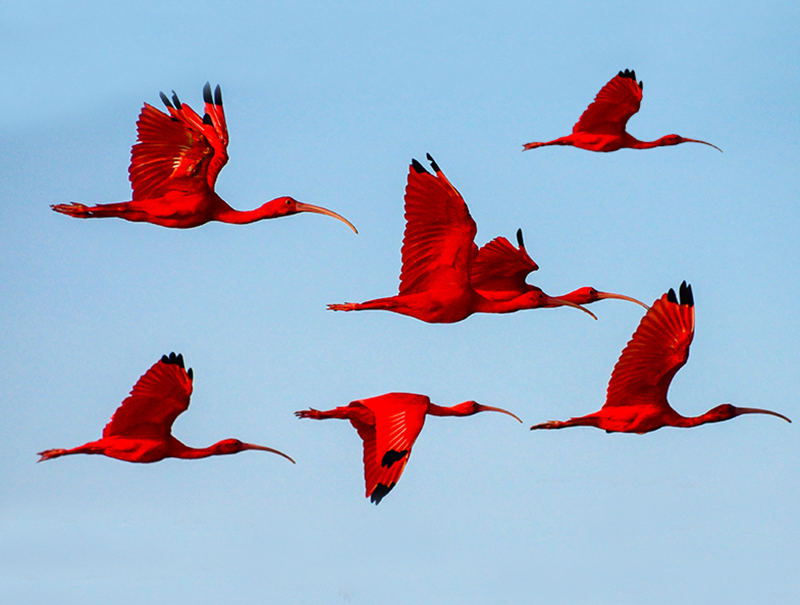

Delta do Parnaíba - Documentário
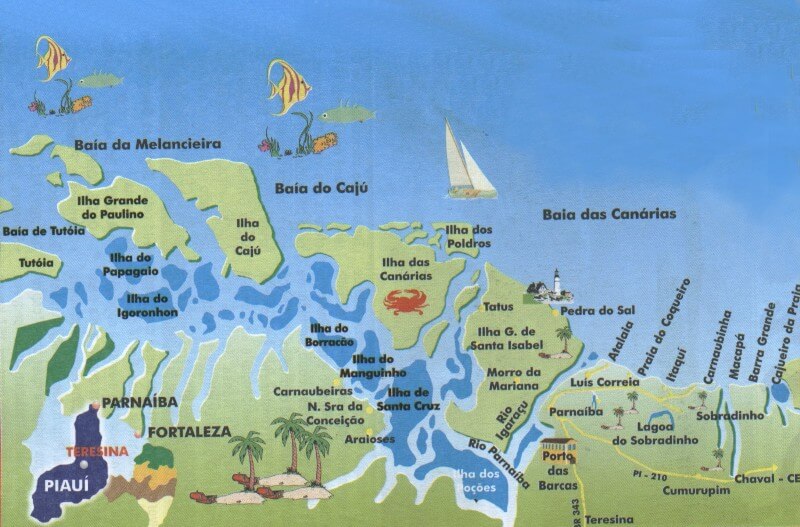
Ilhas das Canarias no Delta do Parnaíba
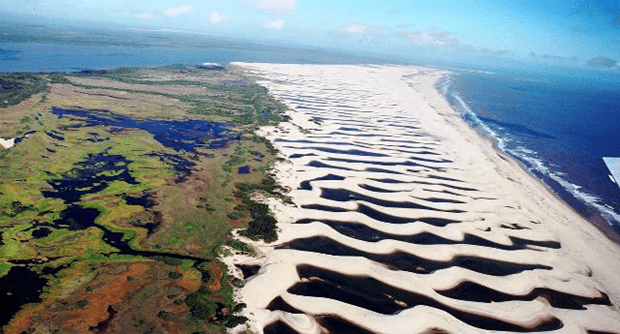
Delta do Parnaíba - Guia de Turismo
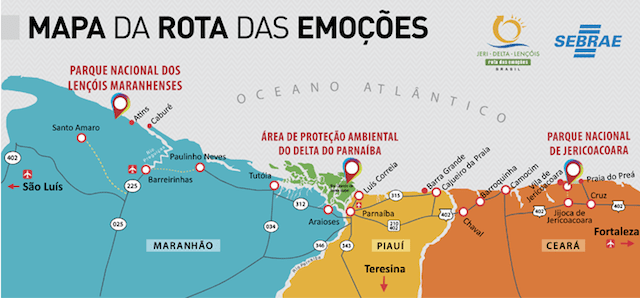
Rota das Emoções - Delta do Parnaíba a Barra Grande
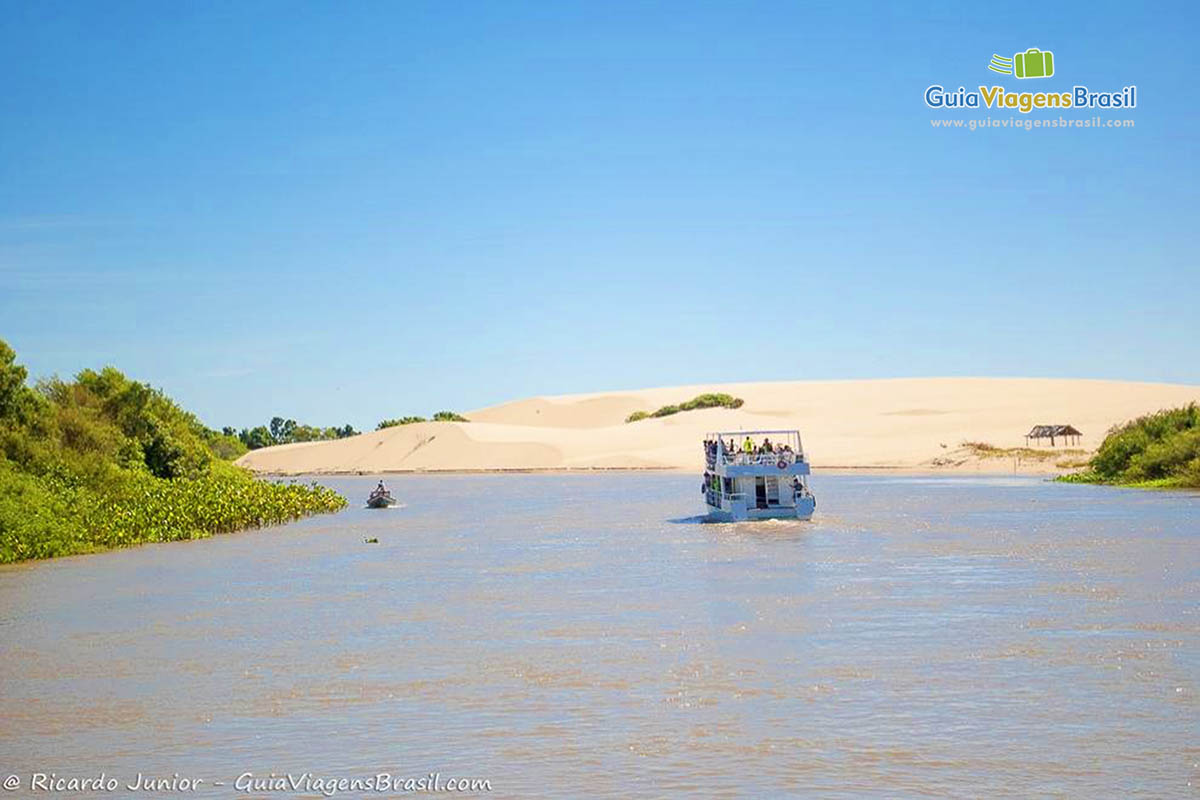
Delta do Parnaíba no Piauí e Maranhão01:41
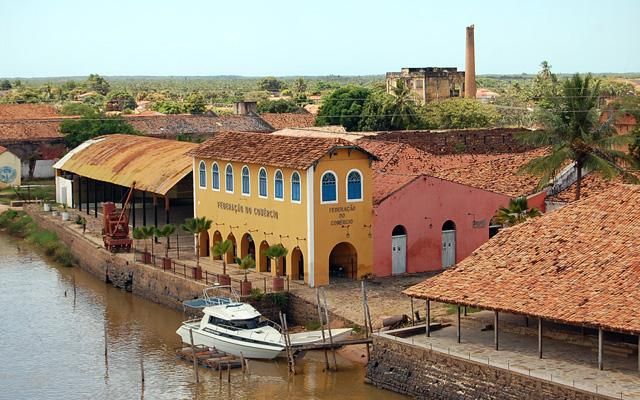
Porto das Barcas em Parnaíba02:14
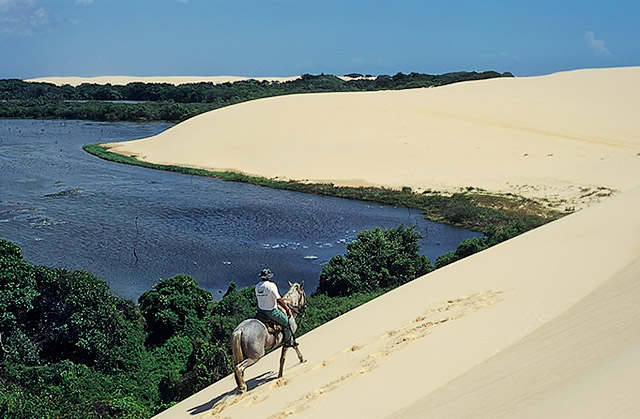
Ilha do Caju
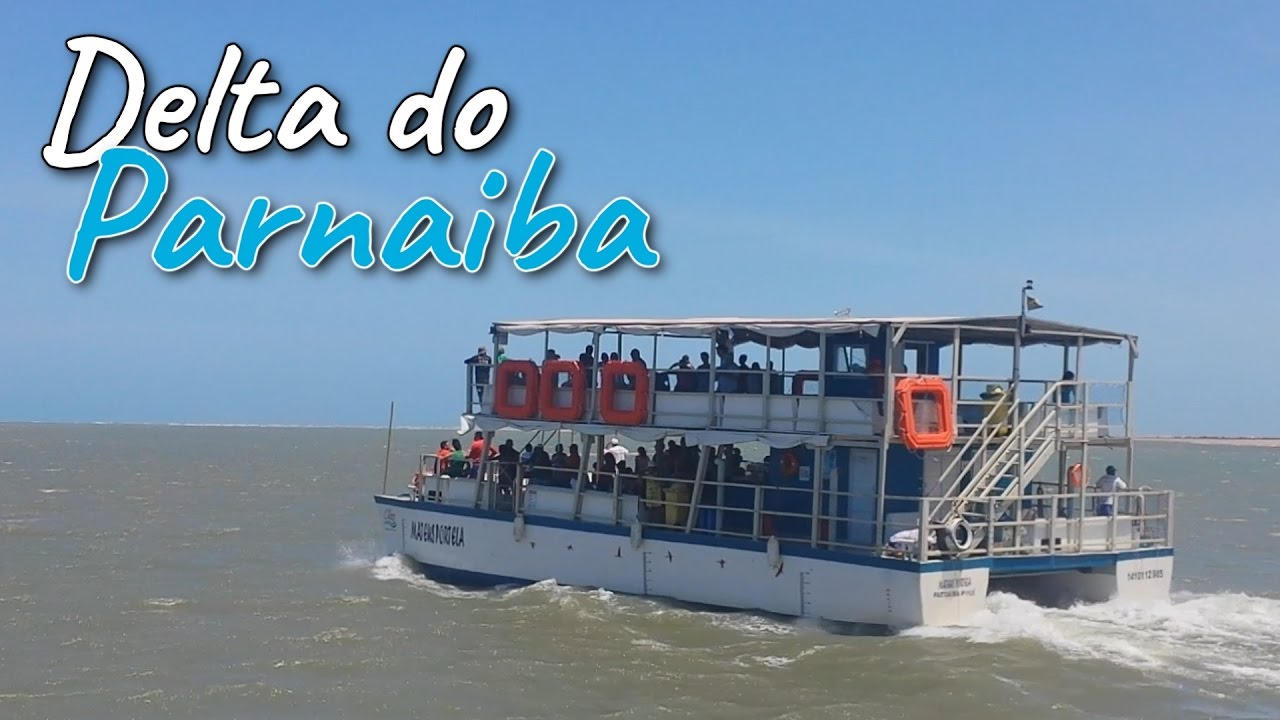
Passeio de barco no Delta do Parnaíba
Tourist Spots of the Parnaíba Delta

Like the palm of a hand, the Parnaíba River forms five river arms before flowing into the Atlantic Ocean, creating a mosaic of islands of the most varied sizes. We are in the Parnaíba delta, the third largest in the world, with its golden dunes, igarapés, mangroves, forests and lagoons.
The starting points to explore this green labyrinth is Parnaíba, in Piauí, or Tutóia, in Maranhão.
The entrance to the Parnaíba Delta can be Tutóia, a city with about 60 thousand inhabitants located near another jewel of nature, the Pequenos Lençóis, a miniature version of the Lençóis Maranhenses, outside the limits of the national park. Bordering the attraction are six beaches – Andreza, Barra, Félix, Moita Verde, Arpoador and Amor, which can be explored on a buggy ride.
1. baskets and lace
The carnauba tree, which for decades sustained the economy of the small towns of the Parnaíba delta, today is the raw material for making handicrafts.
On Ilha Grande de Santa Isabel, the palm’s straw is transformed into baskets, ornaments, placemats and other utilitarian objects at the Santa Isabel Braiding Association, where 25 families work (Rua Evangelina Rosa, 548, Ilha Grande de Santa Isabel).
In the locality of Morro da Mariana, on the same island, a group of lace makers produces clothes and accessories, mainly sent to sophisticated clothing manufacturers in the south of the country (Rua Turiano Ribeira, 380, Centro).
2. BOAT RIDES THROUGH THE PARNAÍBA DELTA
Two types of tours cross the mangroves of the Parnaíba delta. One lasts eight hours and is carried out on large boats, for groups of up to 250 people.
The service includes fruit, lunch and a caranguejada. The boat stops at the beach of Ponta das Canárias, whose landscape is covered with carnauba trees, and on the island of Poldros, which has dunes that advance towards the sea and is a destination for those who practice kitesurfing.
The other option is to go into the river in a voadeira, a simple boat with a speedboat engine, for up to four people.
In addition to Poldros Island, the four-hour trip includes Feijão Bravo Bay, with a turbid sea surrounded by mangroves, and where low tide forms saltwater lagoons.
A good program is to stay on the island of Canarias, starting point for tours and the island of Caju. There is a small and friendly village that lives from fishing and crabbing.
3. UÇÁ CRAB.
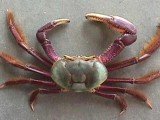
On Wednesdays and Saturdays, a scene is repeated at the port of Tatus, on the island of Santa Isabel: men ship boxes and boxes full of crabs, destined for the bars and restaurants of Fortaleza and the coast of Ceará.
The large, bluish uçá (Ucides cordatus) lives in mangroves all along the Brazilian coast; in the delta, where mangrove areas are very extensive, production is high.
Local bars serve the crustacean cooked in water seasoned with onion, bell pepper, tomato and green smell, in the traditional four-piece rope.
The work to obtain them is hard: pickers spend the day among the roots of the mangroves, sticking their hands in the locas embedded in the mud. The activity is suspended between the months of December and March, when the species is reproducing.
4. FISH-BOI PROJECT
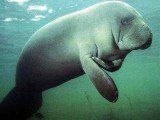
In the fishing community called Cajueiro da Praia, 75 kilometers from Parnaíba, a research base of the Manatee Project has an observation tower of these aquatic mammals, which usually frequent the waters of the region.
Departing from Itam beach, visitors are led by Ibama guides in canoes, to a base 1400 meters inland. The tour is only available by appointment. R. Grigalva Carneiro, 61, Center.
5. PIAUÍ BEACHES
Piauí has only 66 kilometers of coastline, bordered by dunes, with calm waves.
8 kilometers from Cajueiro da Praia, Barra Grande has a tumbling sea and a strip of white sand; through it you can reach the bar of the Camurupim River, where there is a small fishing village.
On the other side of the estuary, the beaches of Macapá and Maramar offer pleasant sea bathing and have a structure of stalls serving seafood snacks. The beaches of Carnaubinhas and Itaqui are semi-deserted, with tumbling seas.
Those looking for accommodation and restaurants should head to Coqueiros beach.
Atalaia, less than 10 kilometers from the city of Luís Correia, also has tents and hotels; from its end, you can see the strip of wild vegetation and the dunes of the island Grande de Santa Isabel, where Pedra do Sal beach is located, with kiosks, ideal for surfing.
6. FROM THE PARNAÍBA DELTA TO THE LENCOIS MARANHENSES
From the Parnaíba delta it is possible to reach the Lençóis Maranhenses in two ways: from Parnaíba, towards the town of Barreirinhas, gateway to the Lençóis Maranhenses National Park, on a three-hour road trip recommended for cars with traction.
On the way, it is worth a stop to visit the village of Paulino Neves, better known as Rio Novo, a fishing community where the dunes extend to those of the park.
The other, more tiring option is the one commonly used by locals: take a boat (called a “gaiola”) from the port of Barcas, in Parnaíba, and face the uncomfortable eight-hour journey to the city of Tutóia, in Maranhão.
It is recommended to bring a hammock, as well as water, snacks and insect repellent.
In the center of Tutóia, there are car departures to Rio Novo, Barreirinhas and Caburé, where there are lodging options for those who want to visit Lençóis Maranhenses.
7. ILHA DO CAJU
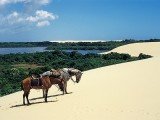
In 1847, Englishman James Frederick Clark entered the Parnaíba delta region to explore carnauba.
Not only did he settle on the 100-square-kilometer island, but he also banned hunting and deforestation. Eventually, he created a surprising little paradise.
Caju Island, 50 kilometers from Parnaíba, is part of the municipality of Araioses, in Maranhão, and preserves six ecosystems: 18 kilometers of beaches, four types of mangroves, flooded fields, lagoons, as well as dunes and forests.
There are foxes, armadillos, ocelots, and flocks of guarás, the intense red bird that symbolizes the delta.
To get to know it, it is mandatory to make a reservation at the Ilha do Caju Ecological Refuge, the only inn on the island, which provides boat transportation and has guides for walking, horseback or jeep tours. It is recommended to wear galoshes, long-sleeved clothing, sunscreen and repellent.
8. CANARY ISLAND
The Canary Island (Araioses-MA) is the second largest island in the Parnaíba River Delta, second only to Ilha Grande in Piauí. It houses a fishing village with more than 2500 inhabitants.
The history of Canaries has an initial milestone 1806, when a fisherman from Acaraú, together with three companions attracted by the abundant production of fish and with the objective of implanting corral fishing in the bar of the dives that later came to be called canaries, due to the large number of birds called canaries in the region and a plant that served as food for the animals, called canarana.
Thus the people began to travel to the island of the canaries or canarana.
Today the Canary Island is an environmental preservation area, part of the marine extractive reserve of the Delta do Rio Parnaíba, its population is approximately 2500 inhabitants distributed in four villages: Canaries, Passarinho, Torto and Caiçara. There are inns and restaurants and it is an ideal place for tourists to stroll.
9. ILHA GRANDE DE SANTA ISABEL
Praia Pedra do Sol is the considered beach of Parnaíba, Pedra do Sal, with 8 km long, is located on Ilha Grande de Santa Isabel 15 km from the center of Parnaíba.
Arriving at the beach, it is possible to visualize a set of granite rocks, nothing more than a hill of stones that advances into the ocean, dividing the beach into two sides: the brave, more frequented by surfers for having strong waves and the tame side, ideal for resting, fishing and watching the sunset.
10. PORTO DAS BARRACAS
Porto das Barcas is the gateway to the Parnaíba Delta, which in itself is already quite popular. But it is much more than that!
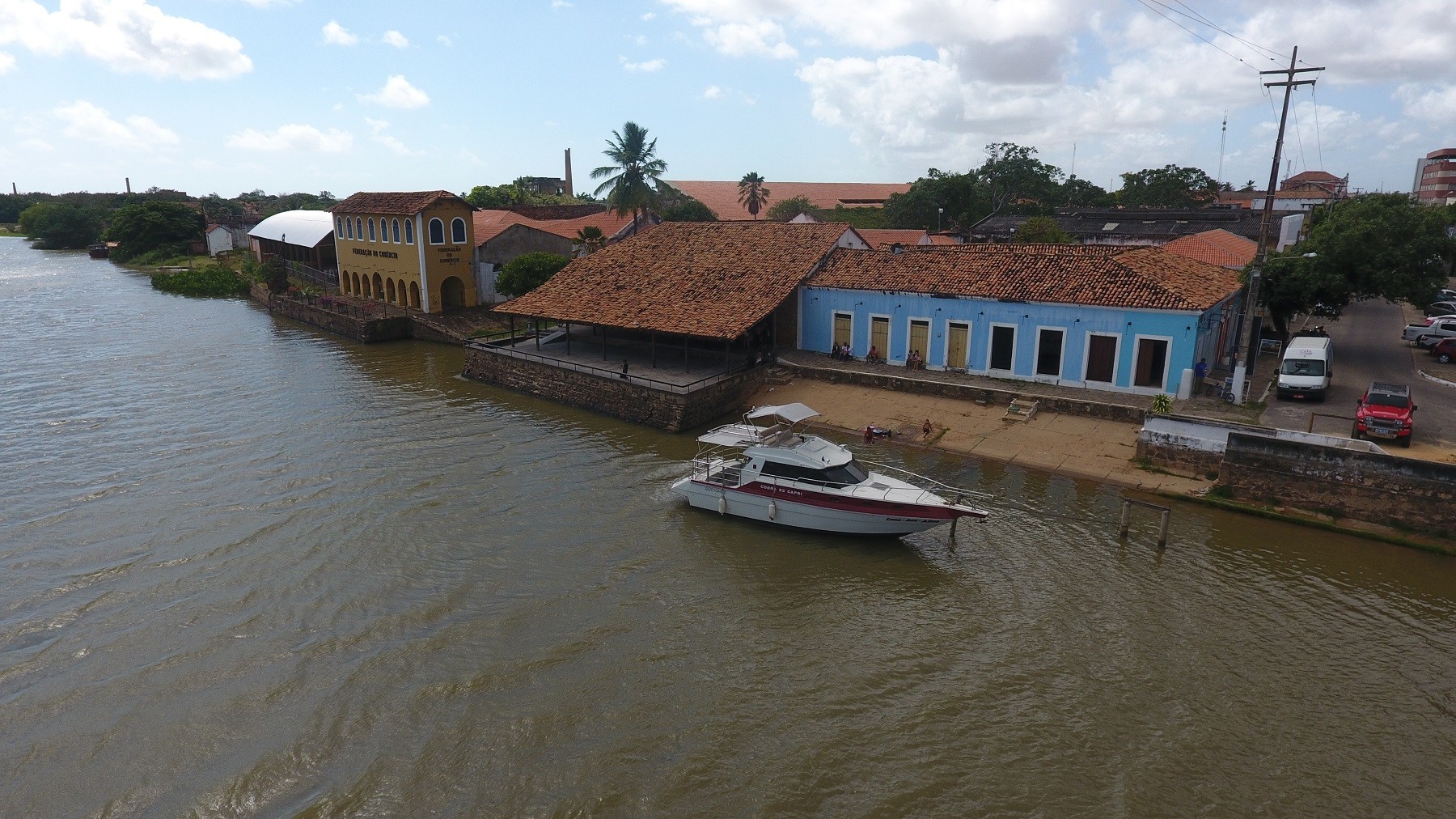
Porto das Barcas is a conglomerate that unites memory, leisure, fun and culture. Here you will find the ruins of what was once the port, with its old warehouses, customs buildings, quays, courtyards and alleys. Its facade is neoclassical and its entire structure involves stone walls and a roof made of carnauba.
Tourism and Travel Guide of the Parnaíba Delta in Piauí



















